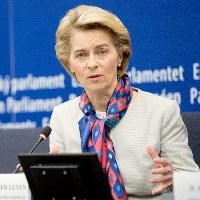(BRUSSELS) – The EU unveiled plans Tuesday to finance its new European Green Deal, which it says would lead to more than EUR 1 trillion of public investment through EU financial instruments, as well as private funds.
With the EU’s commitment to becoming the first climate-neutral bloc in the world by 2050, significant investment is required from both the EU and the national public sector, says the Commission, as well as the private sector.
While all EU Member States, regions and sectors will need to contribute to the transition, the scale of the challenge is not the same. Some regions will be particularly affected and will undergo a profound economic and social transformation. The EU executive accordingly also outlined a ‘Just Transition Mechanism’, which will provide tailored financial and practical support to help workers and generate the necessary investments in those areas.
“People are at the core of the European Green Deal, our vision to make Europe climate-neutral by 2050,” said the Commission president Ursula von der Leyen, outlining the plans: “The transformation ahead of us is unprecedented. And it will only work if it is just – and if it works for all. We will support our people and our regions that need to make bigger efforts in this transformation, to make sure that we leave no one behind.”
EC executive vice-president Valdis Dombrovskis gave more details of the funding plans: “First, we will use the EU budget to leverage private funds for green projects across Europe and support the regions and people most affected by transition. Second, we will create the right regulatory incentives for green investments to thrive. Last but not least, we will help public authorities and market players to identify and develop such projects.”
The European Green Deal Investment Plan
The European Green Deal Investment Plan will mobilise EU funding and create an enabling framework to facilitate and stimulate the public and private investments needed for the transition to a climate-neutral, green, competitive and inclusive economy. Complementing other initiatives announced under the Green Deal, the Plan is based on three dimensions:
- Financing: mobilising at least 1 trillion of sustainable investments over the next decade. A greater share of spending on climate and environmental action from the EU budget than ever before will crowd in private funding, with a key role to be played by the European Investment Bank.
- Enabling: providing incentives to unlock and redirect public and private investment. The EU will provide tools for investors by putting sustainable finance at the heart of the financial system, and will facilitate sustainable investment by public authorities by encouraging green budgeting and procurement, and by designing ways to facilitate procedures to approve State Aid for just transition regions.
- Practical support: the Commission will provide support to public authorities and project promoters in planning, designing and executing sustainable projects.
The Just Transition Mechanism
The Just Transition Mechanism (JTM) is a key tool to ensure that the transition towards a climate-neutral economy happens in a fair way, leaving no one behind. While all regions will require funding and the European Green Deal Investment Plan caters for that, the Mechanism provides targeted support to help mobilise at least 100 billion over the period 2021-2027 in the most affected regions, to alleviate the socio-economic impact of the transition. The Mechanism will create the necessary investment to help workers and communities which rely on the fossil fuel value chain. It will come in addition to the substantial contribution of the EU’s budget through all instruments directly relevant to the transition.
The Just Transition Mechanism will consist of three main sources of financing:
- A Just Transition Fund, which will receive 7.5 billion of fresh EU funds, coming on top of the Commission’s proposal for the next long-term EU budget. In order to tap into their share of the Fund, Member States will, in dialogue with the Commission, have to identify the eligible territories through dedicated territorial just transition plans. They will also have to commit to match each euro from the Just Transition Fund with money from the European Regional Development Fund and the European Social Fund Plus and provide additional national resources. Taken together, this will provide between 30 and 50 billion of funding, which will mobilise even more investments. The Fund will primarily provide grants to regions. It will, for example, support workers to develop skills and competences for the job market of the future and help SMEs, start-ups and incubators to create new economic opportunities in these regions. It will also support investments in the clean energy transition, for example in energy efficiency.
- A dedicated just transition scheme under InvestEU to mobilise up to 45 billion of investments. It will seek to attract private investments, including in sustainable energy and transport that benefit those regions and help their economies find new sources of growth.
- A public sector loan facility with the European Investment Bank backed by the EU budget to mobilise between 25 and 30 billion of investments. It will be used for loans to the public sector, for instance for investments in district heating networks and renovation of buildings. The Commission will come with a legislative proposal to set this up in March 2020.
The Just Transition Mechanism is about more than funding: relying on a Just Transition Platform, the Commission will be providing technical assistance to Member States and investors and make sure the affected communities, local authorities, social partners and non-governmental organisations are involved. The Just Transition Mechanism will include a strong governance framework centred on territorial just transition plans.
European Green Deal Investment Plan + Just Transition Mechanism - background guide
European Green Deal - background guide
European Green Deal – Commission website
Factsheets
Investing in a Climate-Neutral and Circular Economy
The Just Transition Mechanism: Making sure no one is left behind



